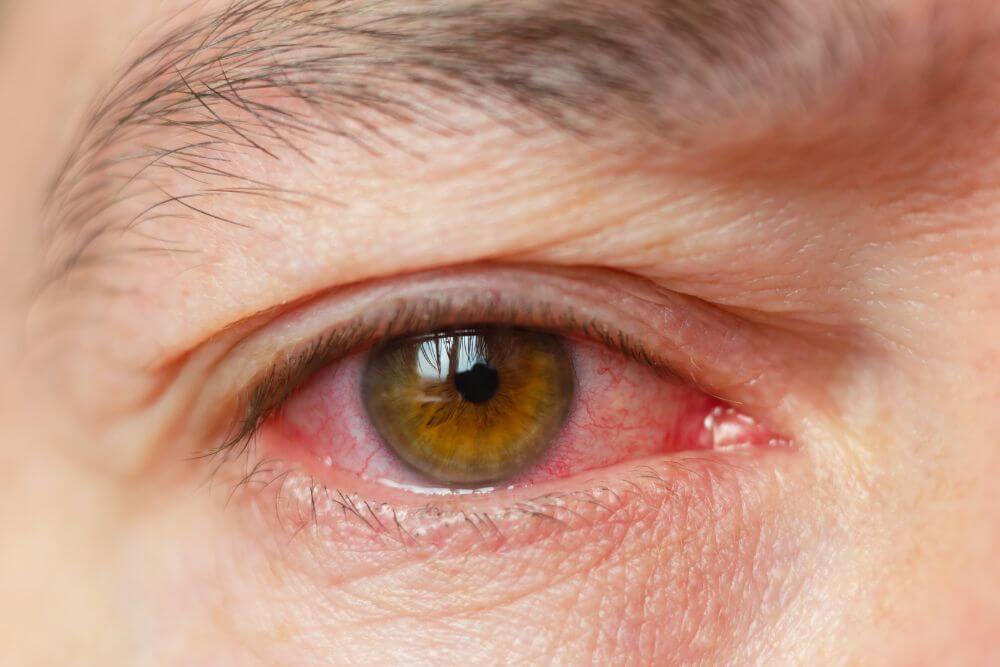Uveitis: Understanding and Managing Eye Inflammation
Uveitis, an inflammatory condition affecting the middle layer of the eye, can significantly impact vision and overall well-being. This article delves into understanding uveitis, its various forms, symptoms, and treatment options.

What is Uveitis?
The uvea, also known as the uveal tract, is a pigmented layer in the eye responsible for supplying blood and nutrients to the retina and other vital structures. It comprises three parts:
- Iris: The colored part of the eye responsible for controlling the amount of light entering the eye.
- Ciliary body: A muscle responsible for focusing the lens.
- Choroid: A layer containing blood vessels that nourish the retina.
Uveitis occurs when inflammation affects any part of the uvea. This inflammation can be caused by various factors, including infections, autoimmune diseases, and external factors like injuries.
Types of Uveitis
Uveitis can be categorized based on the location of the inflammation:
- Anterior uveitis (iritis): This is the most common form, affecting the iris.
- Intermediate uveitis: This form affects the ciliary body.
- Posterior uveitis: This form affects the choroid and retina.
- Panuveitis: This form involves inflammation in all parts of the uvea.
Symptoms of Uveitis
Symptoms of uveitis can vary depending on the type and severity of the condition. However, some common signs include:
- Redness in the white of the eye (sclera)
- Pain in the eye
- Blurred vision
- Light sensitivity (photophobia)
- Floaters (dark spots or lines in the field of vision)
- Decreased vision
It’s crucial to seek immediate medical attention if you experience any of these symptoms, as early diagnosis and treatment are essential to prevent complications.
Causes of Uveitis
The causes of uveitis can be broadly categorized into:
- Infectious: Bacteria, viruses, fungi, and parasites can cause uveitis.
- Autoimmune: In some individuals, the immune system mistakenly attacks healthy tissues in the eye, leading to uveitis. This can be associated with systemic autoimmune diseases like ankylosing spondylitis, psoriasis, or inflammatory bowel disease (IBD).
- Non-infectious, non-autoimmune: This category encompasses various causes, including injuries to the eye, exposure to certain medications or chemicals, and some types of cancer.
- Idiopathic: In some cases, the cause of uveitis remains unknown, even after thorough investigation.
Diagnosis of Uveitis

Diagnosing uveitis typically involves a comprehensive eye examination by an ophthalmologist, a specialist in eye health. This examination may include:
- Visual acuity test: Measures your ability to see at different distances.
- Slit-lamp examination: Uses a bright light and a magnifying lens to examine the structures of the eye in detail.
- Tonometry: Measures the pressure inside the eye.
- Dilated pupil examination: Allows the doctor to see the interior of the eye more clearly with the use of eye drops to widen the pupil.
- Blood tests and other investigations: In some cases, additional tests may be necessary to identify the underlying cause of uveitis.
Treatment Options for Uveitis
The treatment plan for uveitis depends on the specific type and cause of the condition. The primary goal of treatment is to reduce inflammation and prevent vision loss. Here’s an overview of different treatment approaches:
- Corticosteroids: These medications are often the first line of treatment for uveitis. They are available in various forms, including eye drops, oral tablets, and injections, depending on the severity of the inflammation.
- Immunosuppressive medications: These medications are used to suppress the immune system and are particularly helpful when uveitis is associated with an autoimmune condition.
- Antibiotics or Antivirals: If the cause of uveitis is an infection, specific medications targeting the causative agent will be prescribed.
- Other medications: Additional medications like pain relievers or medications to dilate the pupil and reduce inflammation may be used depending on the specific symptoms.
- Surgery: In severe cases where other treatment options fail to control inflammation or complications arise, surgery may be necessary.
Managing Uveitis
While there is no cure for uveitis, effective management can help control inflammation and prevent vision loss. Here are some tips for individuals living with uveitis:
- Follow your doctor’s treatment plan diligently.
- Attend regular follow-up appointments for monitoring.
- Wear protective eyewear to prevent injuries to the eye.
- Use sunglasses
